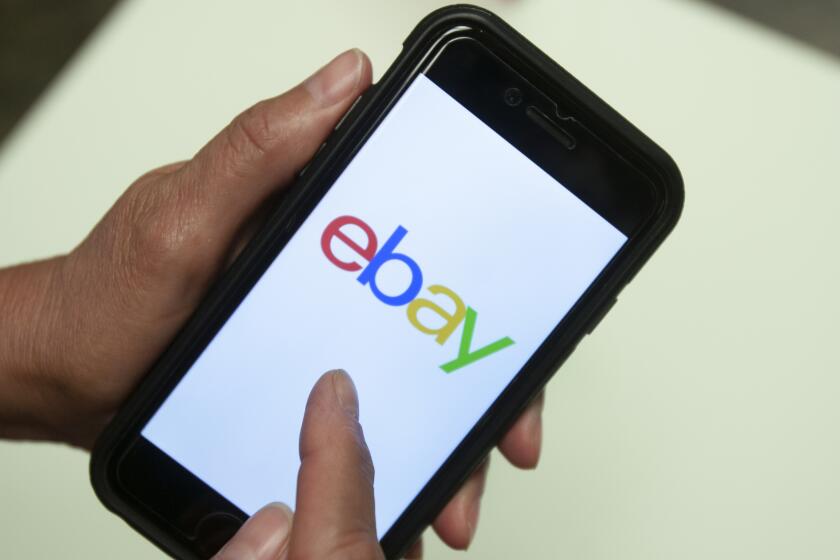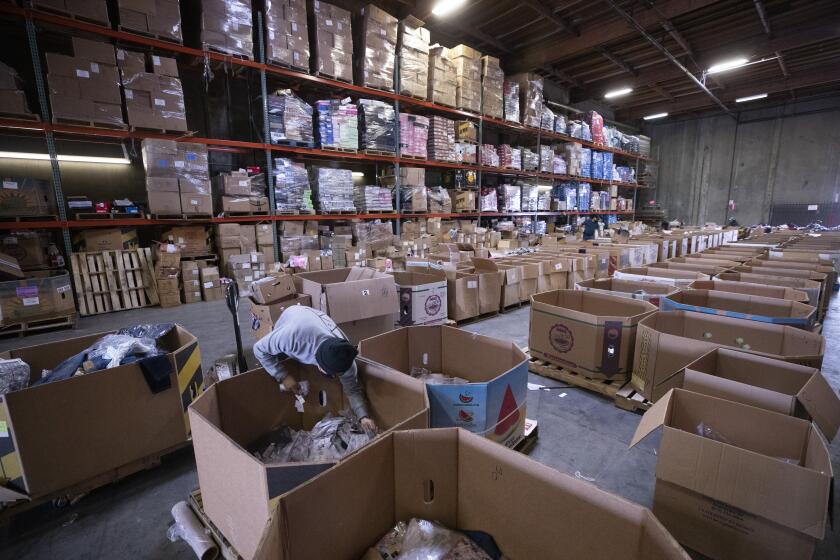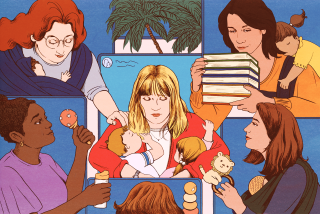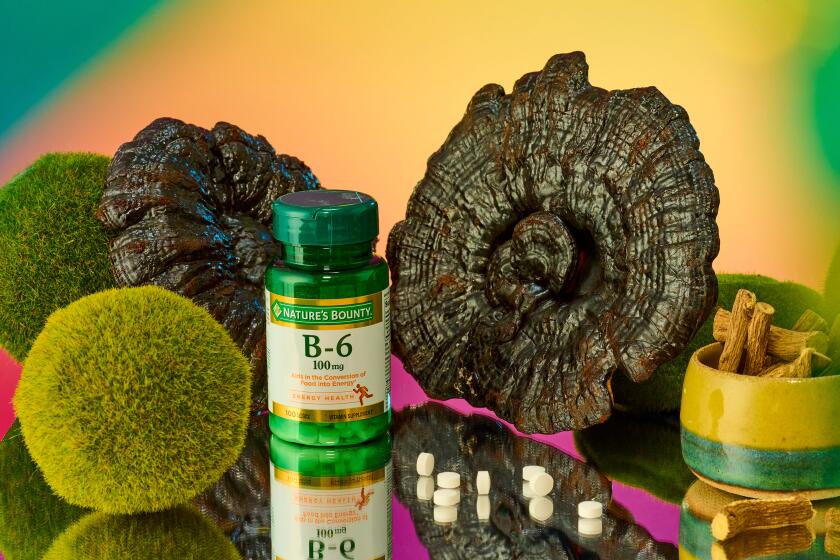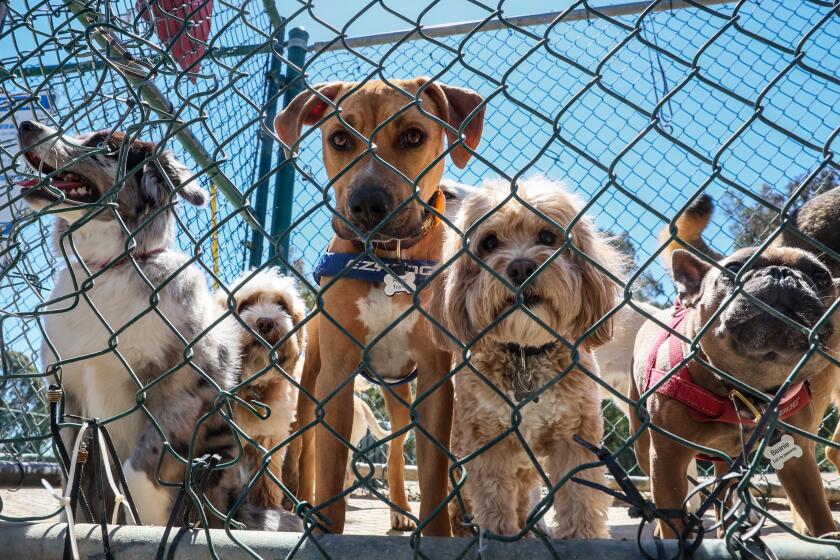How to find (and survive) a Buy Nothing group

It’s never been easier to get involved in the Buy Nothing Project, the giving-and-wishes movement that saw its numbers soar during the pandemic.
That’s because of a new BuyNothing app that throws the user into gift offers and asks more quickly than through Facebook, the original home of the hyperlocal Buy Nothing groups.
With the smartphone app, prospective members don’t need to apply to a local administrator to join a group, a process that can take days. And your search parameters can be expanded significantly.
“It’s exactly the same, except now we have the geo locator that makes it easier so we don’t have to have the artificial boundaries that we set up in Facebook,” co-founder Liesl B. Clark said.
The swelling popularity and accessibility mean a growing crop of newcomers must navigate the groups’ jargon, rules, etiquette, ethics and personalities. Occasionally, drama breaks out, although generally not at Nextdoor’s flame-war levels.
Buy Nothing Project group members may be among the few who aren’t worried about supply chain problems leading to issues with gifts this holiday season.
The lingo
Not all posts use the same language. But certain terms show up that might cause initial head scratching.
ISO: This stands for “in search of.” The acronym appears primarily in the Facebook version, and it means someone is asking for a particular thing. Buy Nothing encourages users to be creative by including photos, a story or a joke beyond the basic request. On the BuyNothing app, “give” and “ask” are preprogrammed categories.
Simmer: This is Buy Nothing’s preferred practice of letting a gift post sit for several days and allowing expressions of interest to pile up instead of giving the item to the first person who requests it. Then the giver chooses among those who want the item using a variety of methods.
Sprout: When a Buy Nothing group gets too big, it is split into two or more groups based on geographic location.
From driving kids to school to filling out surveys, there are plenty of ways to turn your free hours into quick cash. But make sure you know the downsides.
The rules
The Buy Nothing Project is building an economy based on giving goods and services within small communities. Prospective members are admonished that “the true wealth is the connections between real neighbors.” Also: “All gifts must be given without any strings attached and without any expectation of reward other than the joy of giving.”
Members agree there will be no buying, selling, trading, bartering, referrals or fundraisers.
Groups aren’t to be used as a garbage dump for worthless things you just want to be rid of. That’s what Craigslist and the end of your driveway are for.
Reselling of Buy Nothing gifts isn’t forbidden, but many members consider it a violation of the project’s spirit. The Buy Nothing Project advises that members be open about their desire to resell so that givers can take that information into consideration when choosing who gets their items.
The drama
Posting an item on many platforms takes a while. List Perfectly’s software can simultaneously fill fields in up to 12 online sales sites
Emotions can run high, even within a feel-good movement. And because everyone joins with their real name, negative comments can cause hurt feelings.
Buy Nothing has extensive policies on comments with an eye toward allowing discussion without silencing people. There’s also an equity team that establishes and monitors anti-racist and equity-building initiatives.
Sometimes, sprouting an oversized Buy Nothing group comes to be viewed with the same seriousness as political redistricting. A 2018 dispute over splitting the Facebook group in Jamaica Plain, Mass., spilled into local media amid accusations of classism, racism and white fragility.
Another flash point can be how recipients are selected. When givers pick the first person to show interest, it puts at a disadvantage people who don’t constantly monitor the app and may serve to enable secret resellers or hoarders, which group members like to grouse about.
But how to choose? Members try different things beyond the chronological or least-hassle approaches, such as nicest request or best story about how the item will be used or how much it is needed. Maybe the gift should go to someone who hasn’t gotten one in a while.
Then there are the contests: best haiku, limerick, joke and the like. The downside is wading through all the groaners that members submit.
Getting something on the cheap and persuading someone to take it off your hands for more — that’s a time-honored hustle.
Other tips
Read through requests and gift offers even when you don’t want anything. It’s a good way to get to know people.
Don’t fail to let go after letting go. Gift recipients aren’t going to want to have to thank you again and again and again or tell you exactly how they used what you gave.
Learn from the ingrates. Failing to thank people is a sore point among some members, who are sure to talk about it for everyone to see.
The Buy Nothing movement is a work in progress, and the people running it want your feedback. If members are doing things they shouldn’t do “report it,” Clark said. “This is a trust-building experience, and I think we’re now at that stage where, as an app, if anything happens, report it. We’re right there and we’re responding.”
More to Read
Inside the business of entertainment
The Wide Shot brings you news, analysis and insights on everything from streaming wars to production — and what it all means for the future.
You may occasionally receive promotional content from the Los Angeles Times.


